Simin Bihbihani
Simin Bihbahani (b. Tehran 1927). a contemporary writer and ghazal poet well-known for her unprecedented meters as the ‘Nima of ghazal’. Simin Bihbahani, nee Simin Khalili, is the daughter of ‘Abbas Khalili (a distinguished poet, writer, and director of the Iqdam Newspaper) and a grand granddaughter of Hajj Mirza Husayn. Her mother, Fakhr ‘Uzma Arghun, was the daughter of Murtaza Quli Arghun. Fakhr ‘Uzma Arghun had studied Persian, Arabic, jurisprudence, and principles of jurisprudence at a traditional school and was well-versed in prose and poetry. She had also studied French with a Swiss teacher. Fakhr ‘Uzma was a modernist woman, a successful poet, a member of the Women’s Patriotic Society, the editor-in-chief of the Ayanda-yi Iran Newspaper, a member of the Women’s Society and the Democratic Party, and a school teacher teaching French. Simin’s parents had married in 1924, but they separated in 1930 and her mother married ‘Adil Khal’atbari, director of the Ayanda-yi Iran Newspaper, from whom she had three children. Simin Bihbahani first married Hasan Bihbahani and became famous under her husband’s surname, but later she married Manuchihr Kushyar. Simin taught at schools for years. Having obtained admissions from the Faculty of Law and the Faculty of Letters, she opted for the former in 1958. Her teaching career extended over a period of 30 years (1951-1981), but she never accepted any legal employment. In 1969, she was elected a member of the Council for Poetry and Music which was directed by Hushang Ibtihaj, Nadir Nadirpur, Yadullah Ruya’i, Bizhan Jalali, and Firiydun Mushiri. She became a member of the Iranian Writers’ Association (Kanun-i Nevisandegan-i Iran). In 1978, she was awarded the Karl von Osietski Medal by the World Human Rights Organization in Berlin, and Lilian Hilmann-Daschilhemt prize by Human Rights Watch. She intertwines thought and imagination in her poetry through a terse and melodious diction to which her audience emotionally relates. She gave a new life to the ghazal with her novel themes, metaphors, and imagery, and adorned anew the traditional form of ghazal with her innovative themes, poetical diction, and subject-matter. She perplexingly makes untraditional use of the traditional ghazal. She finds modernity neither in the length of couplets nor breaking away from the past, but it is through intertwining the modern and the old that she has created a novel structure and context, resembling the form of ghazal, though quite different from the traditional ghazal in terms of subject-matter, style, audience, and point of view, termed by some as belonging or not belonging to the prosodists’ camp. Her ghazals mainly possess suspension and setting of fiction. Her works include: Sih-tar-i Shikastih (1951); Ja-yi Pa (1956); Chilchiragh (1967); Marmar (1962); Rastakhiz (1972); Khatti zi Sur’at u az Atash (1980); Arzhan (1982); Guzinih-yi Ash’ar (1974); Kaghazin Jamih (1992); Kawli u Namih u ‘Ishq (1994); Ashiqtar az Hamishih Bikhan (1994); Sha’iran-i Imruz-i Faransih (1994; a Persian translation of Pierre de Beauadfer, 2nd edition, 2003); Yik Darichih Azadi (1995); Ba Qalb-i Khud Chih Karidam? (1996); Ja-yi Pa ta Azadi (1998); Az Sal-ha-yi Ab u Sarab (1998); Yiki Masalan Inkih (2000); Majmu’ih-yi Ash’ar (2005); Iy Diyar-i Rawshanam (2006).
Zani ba Damani Shi’r (15); Farhang-i Sha’iran-i Zaban-i Parsi az Aghaz ta Imruz (1, 299-300); Nima-yi Ghazal (631).
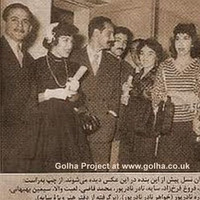
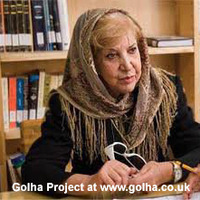
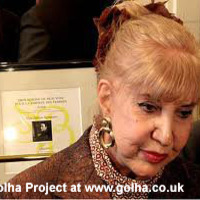
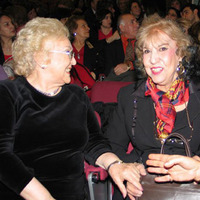
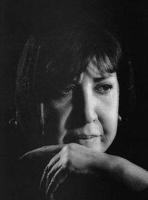
 In association with The Iran Heritage Foundation © All rights reserved 2024. Jane Lewisohn | Website by
In association with The Iran Heritage Foundation © All rights reserved 2024. Jane Lewisohn | Website by